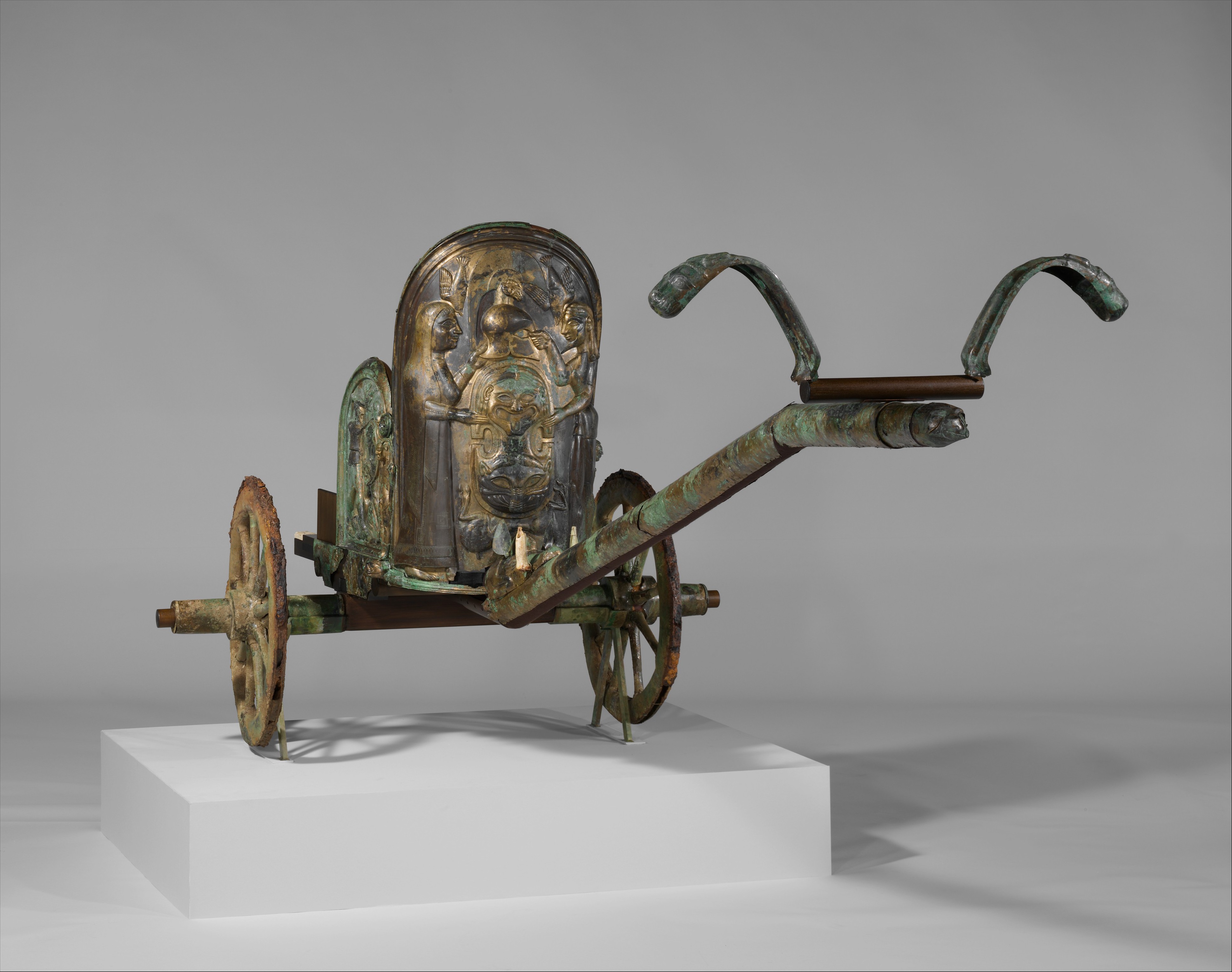A small mountain village in Umbria is fighting New York’s Metropolitan Museum of Art for the ownership of a 2,600-year-old Etruscan war chariot.
The Met intends to make the carefully restored bronze war chariot, which dates from 530BC, the star attraction of its $155 million (£80 million) Leon Levy and Shelby White Court, part of a new wing which is due to open on April 20.

The villagers of Monteleone di Spoleto, population 651, are determined to claim it back. “I am sorry for the Met, which has done a great job, but the chariot is ours and is part of our identity,” said Nando Durastanti, the mayor, who will lead a march in Rome to urge the Italian government to take action on behalf of the village.
Monteleone’s villagers also plan to protest outside the US embassy in Rome, under a banner reading: “We want our chariot back!”
For the past decade, the Met has been carefully restoring the chariot, said to be the only intact Etruscan chariot ever found, to its former glory. The three panels of the 14ft vehicle show scenes from the life of Achilles, the Greek hero.
“It would have been a very special object for the Etruscans, the Rolls-Royce of their time,” said Joan Mertens, from the museum’s archaeology department.

A spokesman said the museum had bought the chariot “in good faith”, although he admitted that, since it has been in their collection for more than a 100 years, there were no papers to prove its provenance.
The villagers say that the chariot was taken out of Italy illegally, and have been encouraged by a government campaign to retrieve antiquities from abroad. The bronze chariot was found near Monteleone di Spoleto in 1902 by a shepherd, Isidoro Vannozzi. Inside were two skeletons, holding two funereal drinking cups. It was sold to a scrap metal merchant from Norcia, in Umbria, for 950 lire (worth 33 pence today). The family used the money to buy 30 terracotta roof tiles.
The chariot was moved to Rome and bought by JP Morgan, the financier. His attempts to take the chariot to New York were blocked by revolts in the Italian parliament.

The chariot was eventually smuggled to Paris in a train full of grain. It was stored in the vaults at Credit Lyonnais, until the Met paid an unnamed intermediary 250,000 lire and took it to New York.
The Italian government, which has recently negotiated the return of 21 items from the Met’s collection, has put the chariot on its list of wanted items. But it is not optimistic about its return.

Italy made its first law on protecting its cultural heritage in 1906, two years after the chariot’s arrival in New York.
A law stating that every archaeological find is the property of the state was signed in 1939.
Maurizio Fiorilli, the lawyer in charge of the Italian government’s efforts to reclaim its antiquities, said: “In this case, there are no real rights.”